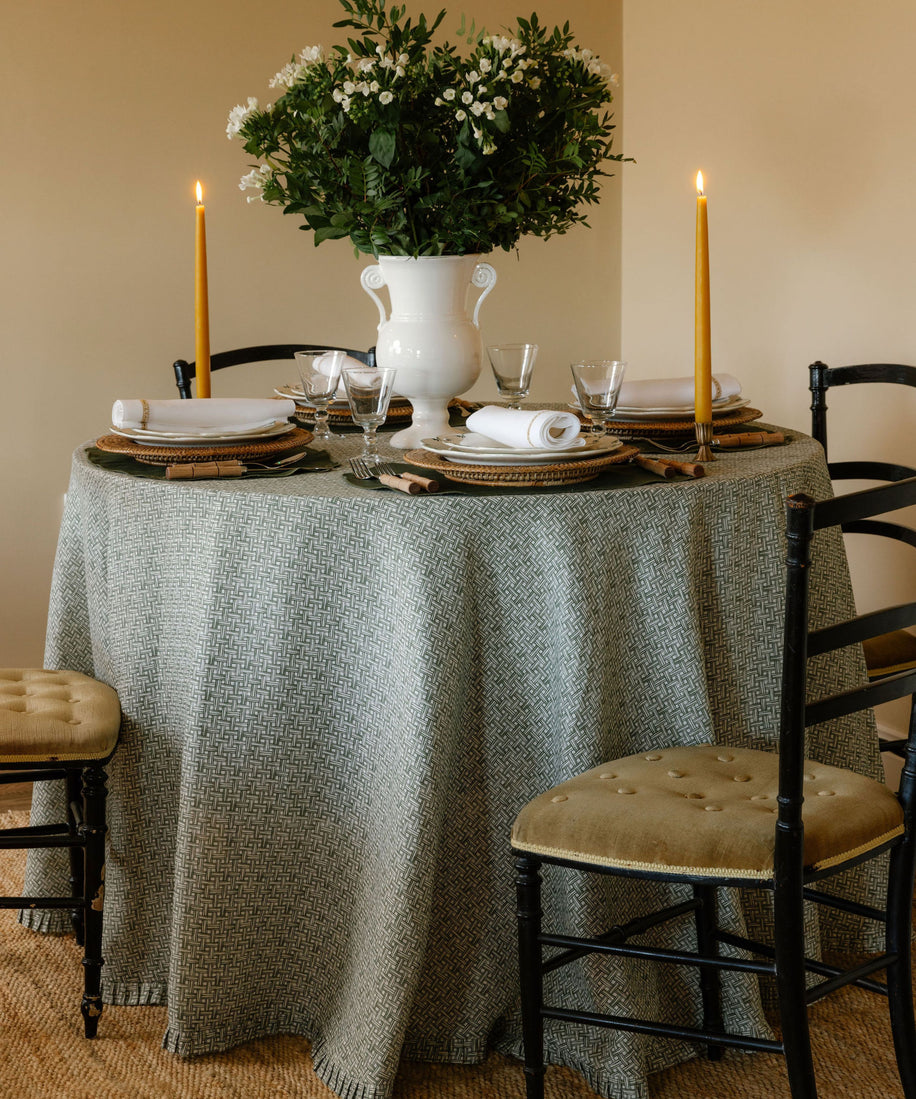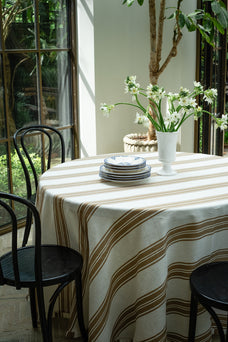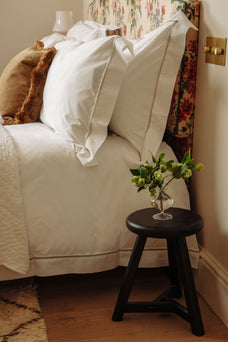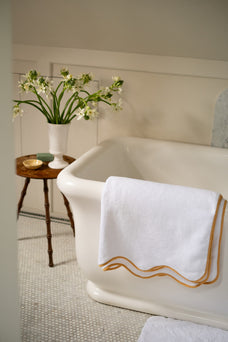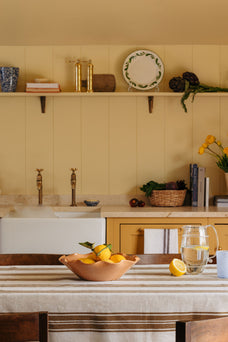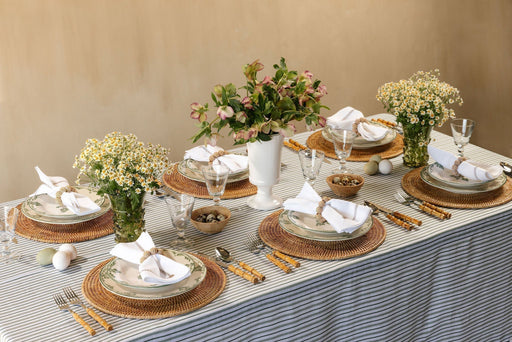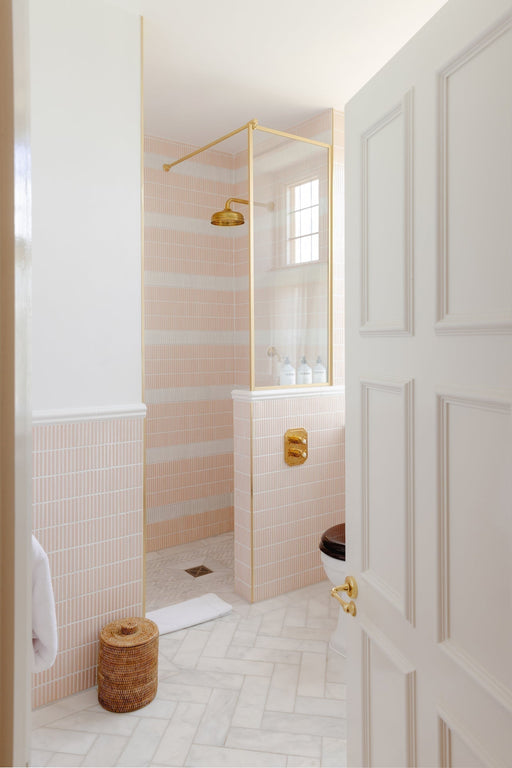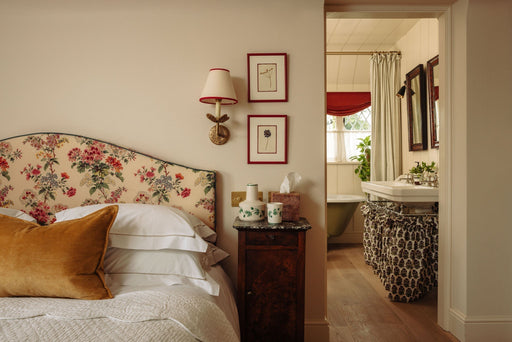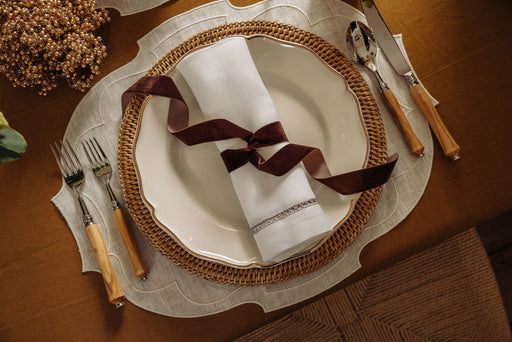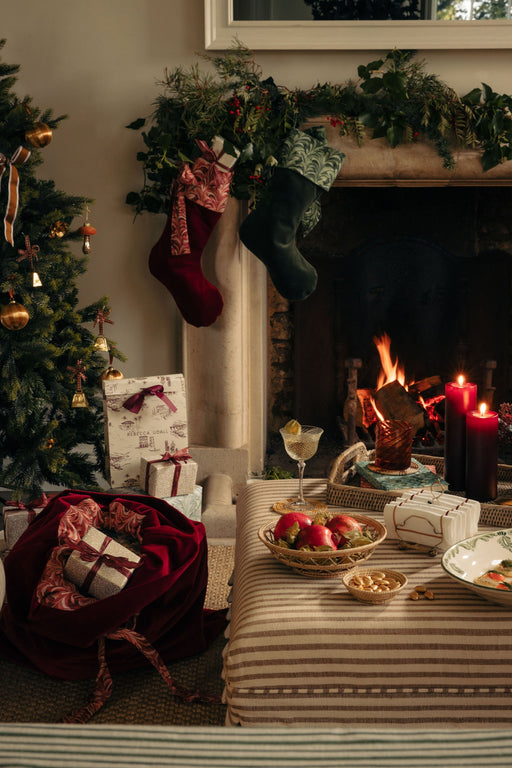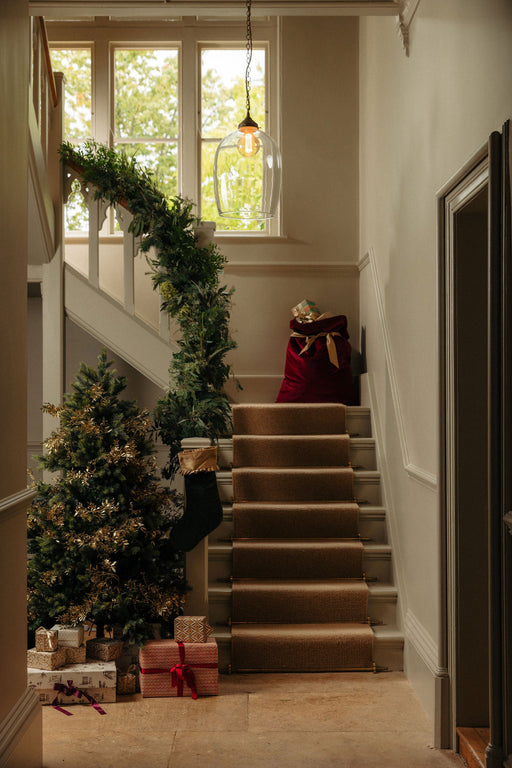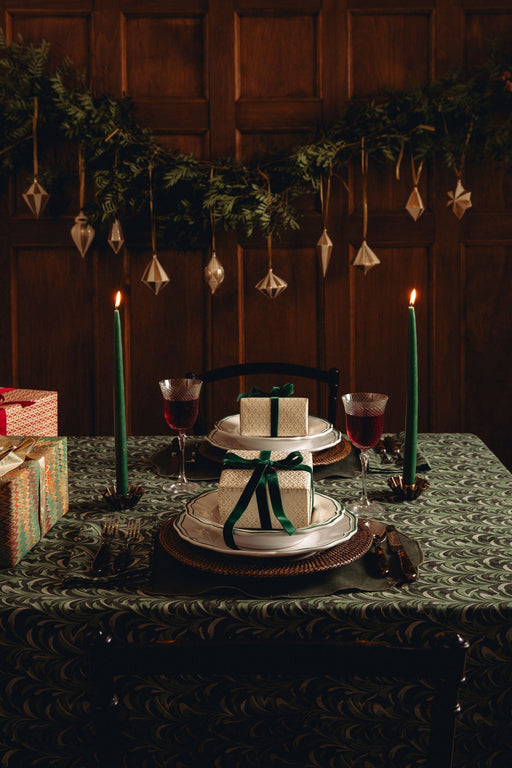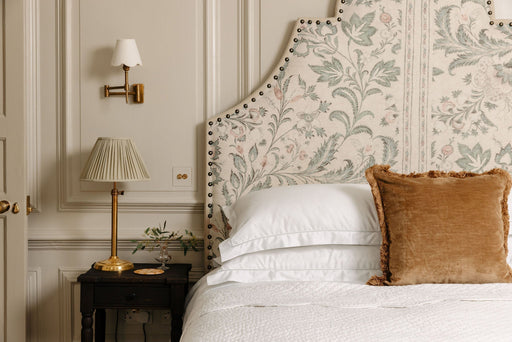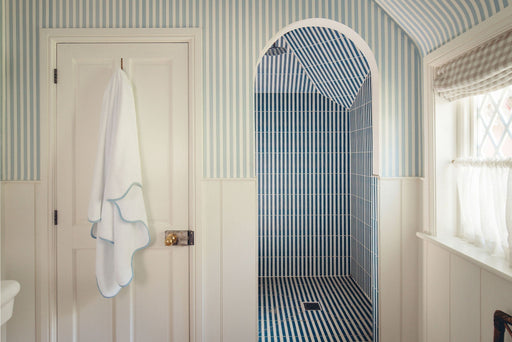Spring has sprung, and the new season heralds a rush of spring-themed dinner parties and gatherings. I love dining at this time of year, gathering friends and family to cook from the best seasonal, spring foods: asparagus, rhubarb, leeks and chard.
Spring dining encompasses fresh flavours, late evenings and the scent of flowers carried on the breeze. There is plenty of joy to be had in styling a spring table after months of cold weather and short days, welcoming in the warmer months with bright, light and pretty styling. There’s something invigorating about sitting around a table with your loved ones, dining on dishes such as roast lamb and minted new potatoes, sipping wine and embracing the new season.
If you’re planning a spring dinner party, here are some tips for helping with the planning for a smooth and enjoyable event.

Set the mood
Are you planning a formal dinner party or a more casual gathering? If you want your dinner to be more of a formal occasion, you can’t beat a crisp ivory or natural tablecloth in a formal dining room. For a less formal dinner party, there are options for a more relaxed setting, such as outdoors or in the kitchen, and the opportunity to style with more whimsical and decorative linens, such as ginghams or floral prints. Discover our Table Linens for further ideas.

Should you host indoors or outdoors?
Spring is in the air – but is it actually warm enough to dine outdoors? At this time of year, even if the forecast looks positive, temperatures are likely to drop in the evenings. For an outdoor meal, lunch time is your best option. You’ll also want to provide blankets for your guests in case they feel chilly, or it may be worth investing in a fire pit or infrared heater. It is possible to host a more formal party outdoors, but al fresco dining naturally lends itself well to a relaxed atmosphere

Decide on the menu
Think about the style of food you want to serve, and the practicalities involved. Do you want to serve lots of small plates or one main dish? Does your menu allow you to cook in advance so you’re not stuck in the kitchen when your guests arrive? Do you want to try something new or make a tried and tested dish? Three things that I find helpful to consider when planning a menu are: do your guests have any dietary requirements, what food is in season, and do the flavours balance well from one course to the next with consideration to how rich each dish may or may not be? My personal preference is a showpiece main with several side dishes to place on the table for guests to serve themselves. This reduces the pressure for serving and means food is less likely to be wasted – guests can take what they fancy and are likely to eat.

Invite your guests
Sometimes a quick text message will suffice, but you really can’t beat paper invitations – especially if the occasion is a celebration or a bigger affair. It really helps to set the tone and build anticipation. Rather than feeling stuffy, there is definitely a movement towards championing this previously “outdated” method of invitation. Romeo & Jules, Smythson, Memo Press and Papier all offer invitations or notecards that I love, with matching menus and place cards for the table. More often than not now, we all receive bills in the post rather than something pleasant – your guests will really appreciate the effort. Ensure to leave enough time before the date of your gathering to invite your guests – if not then a text, possibly followed by a card in the post may be best!

Check you have enough tableware and glassware
There’s nothing worse than being caught short on the night. Plan your tableware and glassware ahead to give you enough time to order extras if you are short. Be sure to check how many settings your table comfortably seats and order flowers or other decorations in good time. If you’re hosting a formal dinner, you will have more crockery, cutlery, and glassware to consider, but even if your occasion is more casual, you will still want to have enough of everything. Think about glassware for aperitifs and then the main event – often you need more than you first thought!

Style your place settings
I do a trial run prior to the event to check that I’m happy with my table styling and to see if I am missing anything. Usually it’s not the full table, rather one or two place settings and then I can visualise.
A tablecloth can really set the scene - at the moment I’m really championing printed linens for spring dining. Consider whether you want a cohesive look (matching tablecloth and napkins, for example) or something more eclectic?
Layering can add depth and texture to your table. Rattan chargers and/or waxed linen placemats, are great for this and also help to protect your tablecloth from spills.
Alongside your choice of plates, glassware, and napkins, think about the individual place settings and how you can make these feel special. There are many ways to fold napkins decoratively, and place cards and menus add a personal, intimate touch. Other decorative elements can nod to your menu or the seasons, such as a sprig of dried flowers or herbs.

Choose flowers to complement your table
The last piece to add is the flowers. I like to collect these on the day of the event, wherever possible, to ensure they are fresh. Flowers are a great way to add texture, so I usually go for a combination of small and larger buds along with some foliage – it usually suits my occasions best as it feels more informal. The beauty with flowers is that they can never not be beautiful, so don’t worry if you don’t feel very confident arranging flowers – I am definitely not an expert! A spring dinner party ideally will champion seasonal flowers – these will be most cost effective and fresh and feel most suited to the moment. If you’re fortunate to have a lot of flowers at home, cut posies from your own garden. Another thing to consider to really elevate your table are to style with impressive blooms such as anemone coronaria or frilly parrot tulips.

Planning your own spring dinner party? Browse our Tableware collection for elevated essentials and discover our Table Look Book for further inspiration.
Discover Rebecca's Spring Favourites.
Discover our scalloped tableware edit.

